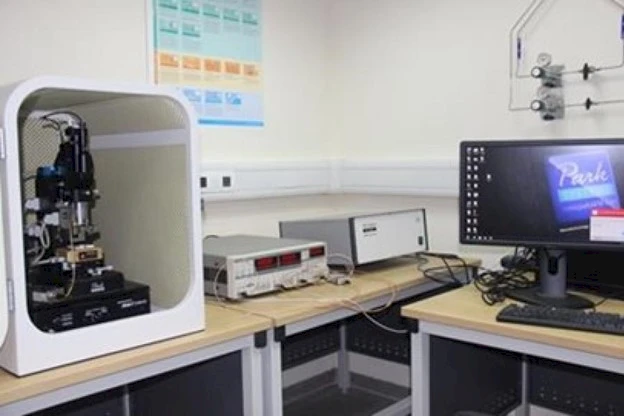Surface Characterization Laboratory
Scanning Probe Microscopy (SPM) is a powerful tool for imaging a specimen surface by scanning with a physical probe. It operates in two basic ways: (i) contact and (ii) non-contact of the probe with a surface to be studied. They are of various types based on the physical processes involved in surface imaging. Some of them are Atomic Force Microscopy (AFM), Conductive-AFM (c-AFM), Piezo-response Force Microscopy (PFM), Electrostatic Force Microscopy (EFM), and Magnetic Force Microscopy (MFM).
Scanning Probe Microscopy (SPM) is a powerful tool for imaging a specimen surface by scanning with a physical probe. It operates in two basic ways: (i) contact and (ii) non-contact of the probe with a surface to be studied. They are of various types based on the physical processes involved in surface imaging. Some of them are Atomic Force Microscopy (AFM), Conductive-AFM (c-AFM), Piezo-response Force Microscopy (PFM), Electrostatic Force Microscopy (EFM), and Magnetic Force Microscopy (MFM).
Probing Surface Morphology
AFM: Determining surface morphology.
c-AFM: Mapping current on a material surface.
PFM: Analysing piezoelectric/ferroelectric domains.
EFM: Mapping surface electric properties.
MFM: Determining surface magnetic domains.
Location
Ground Floor, Room: R003A
Contact Person
6734
